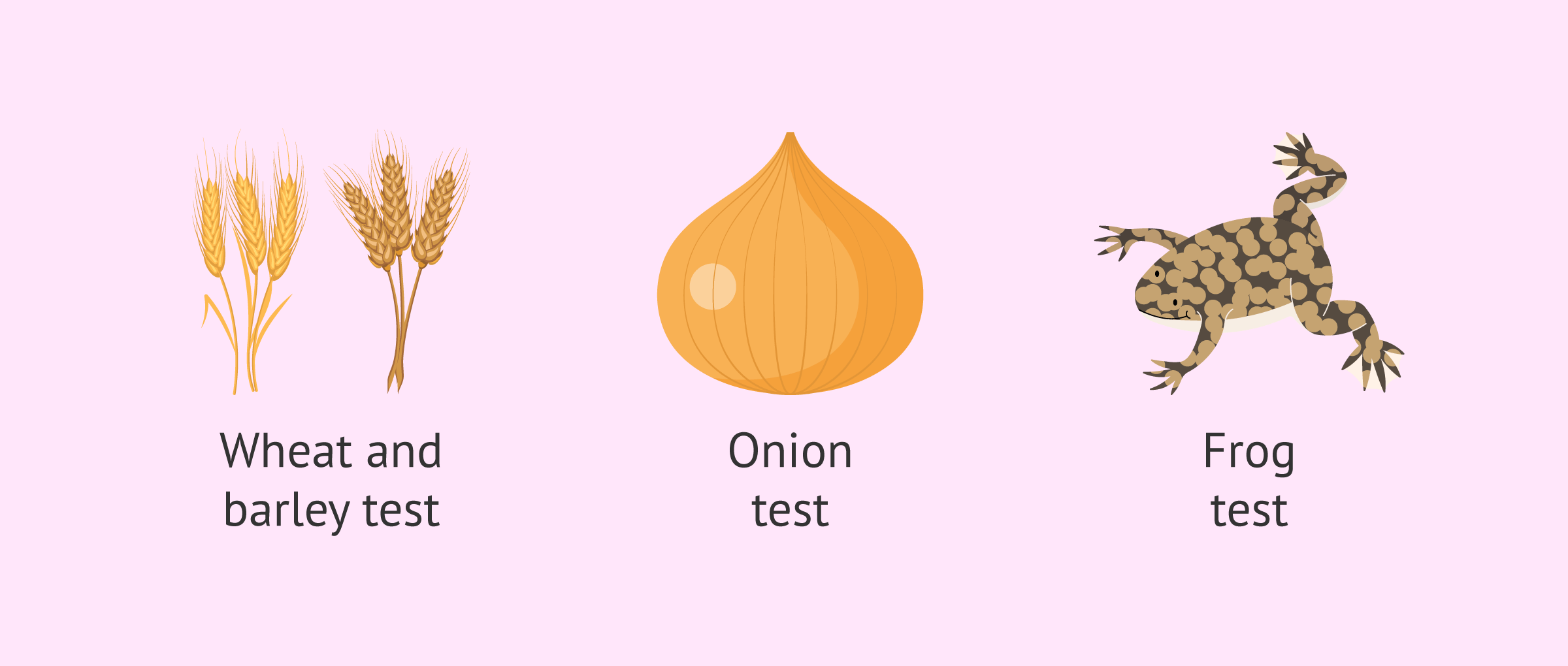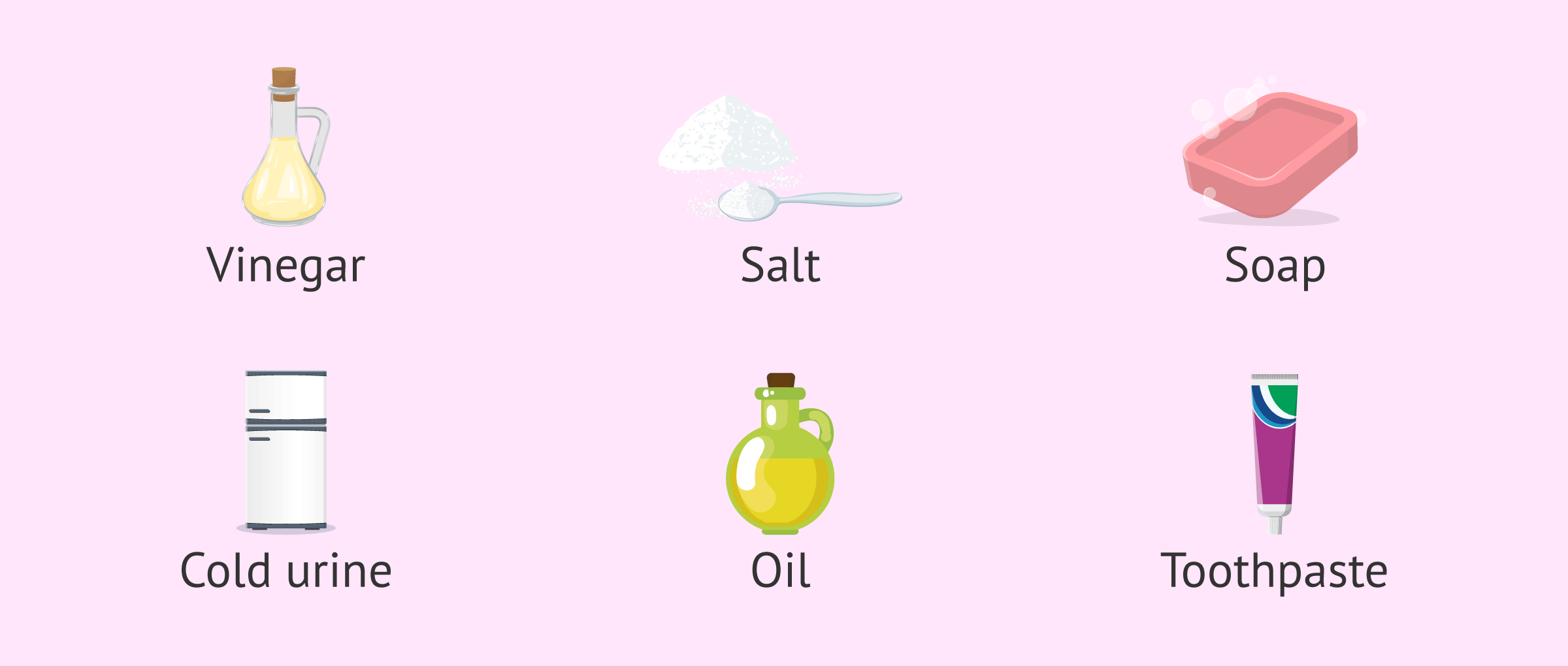Before there were urine and blood pregnancy tests as we know them today, women had other at-home ways to try to find out if they were having a baby or not. However, these home pregnancy tests are not supported by scientific evidence.
Therefore, nowadays, these pregnancy tests that grandmothers probably used to do should only be done as a game, for fun or curiosity, and, to confirm pregnancy, you should take a pregnancy test that you can buy in a pharmacy or a blood pregnancy test at the doctor's office.
Provided below is an index with the 7 points we are going to expand on in this article.
Pregnancy tests throughout history
Already in ancient Egypt a pregnancy test was used that not only served Egyptian women to know if they were pregnant or not, but also tried to predict the sex of the baby.
This test consisted of the woman urinating on wheat and barley seeds. In case there was germination of the seeds, the woman was pregnant. Moreover, if the wheat germinated, the woman would be pregnant with a girl. If, on the other hand, the barley germinated, the woman would expect a child.
In ancient Greece they also had a surprising method (not at all recommended today) to determine whether a woman was pregnant or not. The woman was to insert an onion into her vagina for one night and, the next morning, if the woman's breath had the odor of the onion, she would not be pregnant.
Another test that became very popular until the advent of more modern tests is the"frog pregnancy test". It involved injecting urine from the woman into a frog (African clawed frog, Xenopus laevis) and, if the frog spawned within the next few hours, the woman was pregnant.
Home pregnancy tests
Before there were convenient drugstore pregnancy tests, grandmothers used other ingenious methods to try to test whether or not they were pregnant. For most of them you will need the first urine of the day (because it has a higher concentration of hCG hormone if you are pregnant), a sterilized glass beaker (previously boiled) or a sterile cup that you can buy at the pharmacy and ingredients that are easy to have at home. For example:
- Vinegar test: the woman urinates in a glass up to approximately half of its capacity. Then you should add a tablespoon of vinegar and, without stirring, wait about 20-30 minutes. If after this time the color is different from the beginning or there is foam, it is said that the woman is pregnant.
- Salt test: after depositing urine in a beaker, coarse salt should be added. If a whitish layer appears on top and remains even when removed, the result of this pregnancy test would be positive.
- Soap test: to perform this home pregnancy test, place a piece of unused soap (the traditional soap) in a container. Then, pour over it (until it is largely covered) the urine previously collected in a glass and move the container slightly. If the soap foams and bubbles, the woman would be pregnant according to this test.
- Cold urine test: simply collect the urine in a cup and place it, trying not to move it too much, in the refrigerator. After half an hour, if the urine shows "particles" in the upper part, the result would be positive.
- Oil test: also requires the woman to collect urine in a glass cup and wait for it to cool. Subsequently, just add a couple of drops of oil separately (using a dropper) and check after a few minutes to see if the two drops have united. If this has occurred, the woman would be pregnant.
- Toothpaste test: after adding some white toothpaste to a glass, add some of the woman's urine (previously collected in a glass). Then you would have to stir a little with a toothpick and, if foam appears or changes color, the woman is expecting a baby.
This type of test does not involve any risk, so currently some women continue to perform them out of curiosity and always bearing in mind that the result is not reliable, since they are not supported by scientific evidence.
Why are these pregnancy tests unreliable?
Despite the fact that the woman tries to do this type of home pregnancy test with the best possible conditions, many times the required sterility is not achieved in the elements used (even boiling the glass beaker) or these elements are contaminated with other substances.
In addition, the exact amounts of urine, as well as of the ingredient chosen according to the test, are not determined with certainty, lacking the necessary rigor. This, of course, also influences the result and contributes to the unreliability of this type of test.
Similarly, interpreting the result of these home tests is very subjective and sometimes it is difficult to find out if "particles" have formed or not, or if the small bubbles that have come out are enough.
Therefore, this type of tests performed at home with homemade ingredients such as vinegar, salt, toothpaste... do not have scientific evidence and are not reliable. Therefore, whether they get it right or not is up to chance.
Thus, given the importance of pregnancy and initiating prenatal care, to confirm a pregnancy reliably, once there is a delay in menstruation, a urine test from a pharmacy or a blood test at the hospital, methods that do have scientific support, should be performed.
FAQs from users
What does the acetone pregnancy test consist of?
This home pregnancy test involves adding a small amount of nail polish remover (about a tablespoon) to a glass and mixing it with the woman's urine.
Now simply watch for any reaction, such as bubbles, which would indicate that the woman is pregnant.
However, there is no scientific evidence for this test and to confirm pregnancy, a reliable pregnancy test should be taken, such as a urine test available in pharmacies or a blood test at a health care centre.
Can the basal temperature method confirm if I am pregnant?
The basal body temperature method can only make a woman suspect that she may be pregnant if menstruation does not come on the expected day and the basal body temperature remains elevated and does not drop.
Therefore, if after having estimated the day of ovulation, the basal body temperature remains elevated for a period of 18 days or more, it is possible that the woman is pregnant and a urine or blood pregnancy test should be performed to confirm this.
Suggested for you
If you want to learn more about pregnancy tests, we recommend you to visit this link: When to do a pregnancy test to be reliable?
On the other hand, if you want to read about false positives and negatives in pregnancy tests, you can read the following article: Can pregnancy tests fail? False positives and negatives.
We make a great effort to provide you with the highest quality information.
🙏 Please share this article if you liked it. 💜💜 You help us continue!
References
De Robertis EM, Gurdon JB. A Brief History of Xenopus in Biology. Cold Spring Harb Protoc. 2021 Dec 1;2021(12). doi: 10.1101/pdb.top107615. PMID: 33785561. (View)
Fairweather DV, Cremer AW. Do-it-yourself pregnancy test. Br Med J. 1972 Mar 18;1(5802):747-8. doi: 10.1136/bmj.1.5802.747-b. PMID: 5015336; PMCID: PMC1787665. (View)
Kennedy CE, Yeh PT, Gholbzouri K, Narasimhan M. Self-testing for pregnancy: a systematic review and meta-analysis. BMJ Open. 2022 Feb 28;12(2):e054120. doi: 10.1136/bmjopen-2021-054120. PMID: 35228285; PMCID: PMC8886405. (View)
FAQs from users: 'What does the acetone pregnancy test consist of?' and 'Can the basal temperature method confirm if I am pregnant?'.



